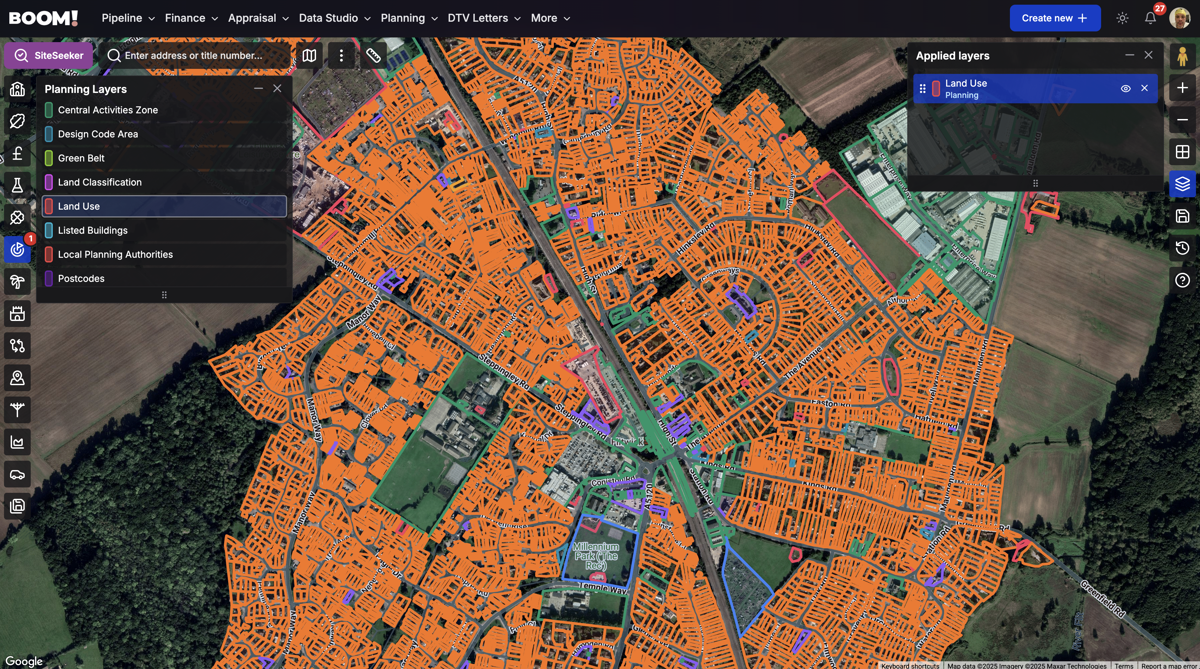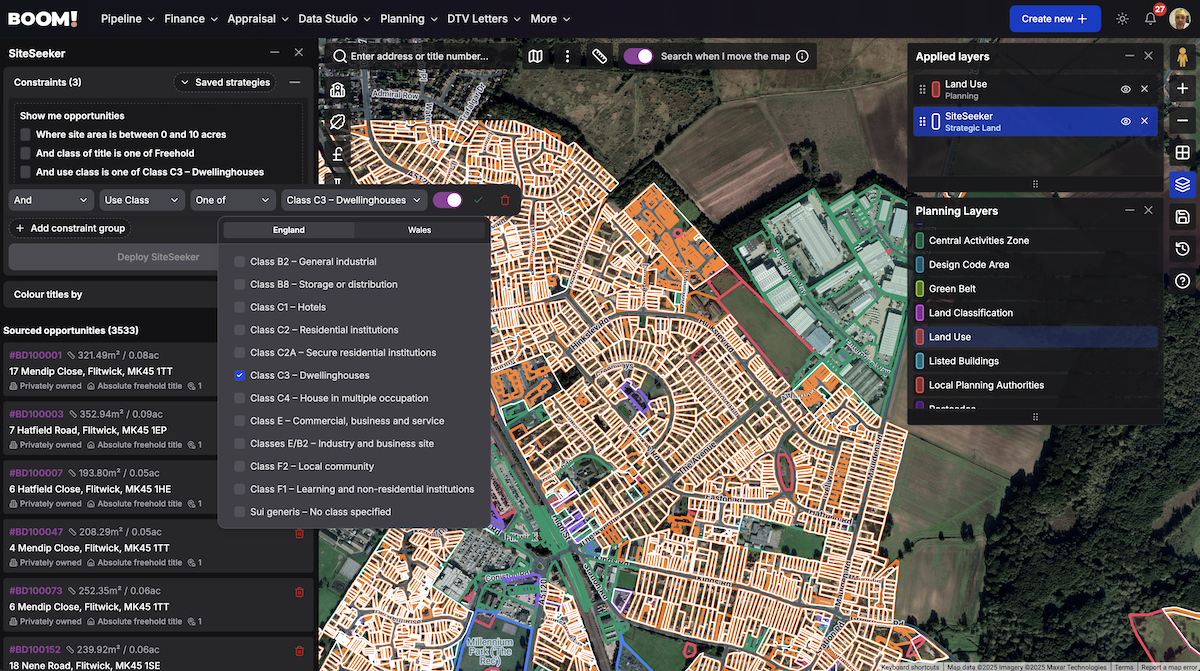What Are Use Classes? A Developer’s Guide to Planning in England







Every building or site you look at in comes with built-in rules about how it can legally be used. These rules are known as use classes, and if you don’t understand them, you risk wasting time on a deal that can’t deliver.
Here’s what you need to know to stay ahead of the competition and make better decisions from day one.
What Are Use Classes (and Why Should You Care)?
Use classes define the lawful use of land or buildings. They’re set out under the Town and Country Planning (Use Classes) Order 1987, with major updates introduced in 2020.
For developers, use classes are a shortcut to understanding what you can do with a site. They determine whether:
You can proceed without full planning permission;
You need to apply for a change of use;
You can benefit from Permitted Development Rights (PDR).
Knowing this early helps avoid delays and bad assumptions.
The Most Common Use Classes Developers Need to Know
Class C3 – Residential: Houses, flats, and most standard living accommodation;
Class E – Commercial, Business and Service: A flexible class that includes shops, offices, cafes, medical clinics, gyms, and more;
Sui Generis – Uses that don’t fit into any class: Pubs, takeaways, nightclubs, large HMOs, betting shops, etc. These typically require full planning for any change;
Class B2/B8 – General Industrial / Storage and Distribution;
Class F1/F2 – Non-residential Institutions and Community Uses: Schools, libraries, places of worship, community halls.
How Use Classes Affect Site Sourcing and Planning Permission
Understanding a building's use class can help you:
Identify sites suitable for permitted development;
Spot conversion opportunities;
Avoid full planning applications where not necessary.
For example, converting a building from Class E to residential (Class C3) may fall under Class MA permitted development rights, saving you from submitting a full planning application.
But if the building is Sui Generis, that same strategy won’t work. You’ll need full permission, and it’s a longer, riskier process.
Recent Changes That Matter in 2025
In 2020, the government introduced major reforms, merging several older classes into the new Class E. This change:
Combined previous retail (A1-A5), office (B1), and some leisure uses (D1/D2);
Made it easier to change uses within commercial categories without planning.
For developers, this opened up major flexibility in high street and commercial assets.
Where Developers Get Caught Out
Sui Generis traps: These uses don’t benefit from PDR and require full planning to change;
Local restrictions: Article 4 Directions and conservation areas can remove PDR flexibility;
Unclear history: If the existing use isn’t documented, you may need a Lawful Development Certificate to confirm it.
How to Check a Property’s Use Class
Use BOOM! to target use class classifications, primary and secondary land use classifications, as well as planning constraints such as Article 4 directions;
Use BOOM! to search local planning applications to determine current and future development pipeline proposals;
Request a Lawful Development Certificate if the use is unclear or undocumented.
Conclusion: Use Classes Are the First Filter in Every Feasibility Check
Before you run the numbers, run a use class check. It tells you what’s possible, what’s risky, and what planning route you’re dealing with.
Get this right, and you’ll move faster, reduce planning risk, and unlock more viable sites than developers still playing catch-up.

How BOOM! Makes Understanding Use Classes Effortless
BOOM! takes the guesswork out of identifying use classes — a key factor in understanding what you can do with a site. Our dedicated Use Class layer, built on Ordnance Survey’s Land Use data, lets you see the assigned use of any site instantly.
This insight is fully integrated into SiteSeeker, so you can assess the data directly and apply it as a sourcing constraint. Whether you’re targeting Class E opportunities or filtering out Sui Generis sites, BOOM! helps you move faster and with fewer surprises.